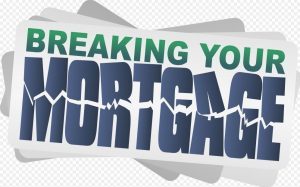
Things to consider before you buy a heritage home
We’ve all walked by them at some point and marveled. It’s the character house that has to be at least 100 years old and is still standing. Your mind takes you to a different place. You start thinking about what life must have been like when it was built, the families that have lived there through the years. If the walls could talk, right? Most of us will just have to settle for our modern abodes. There are, however, a lucky few who, with a bit of patience and a love of the classics, call these heritage houses their homes.
Nestled in the older enclave of Queen’s Park in New Westminster, B.C., you’ll find Tony Sverdrup and his heritage beauty. The house, which spans 5,500 square feet, predates the First World War and has an interesting history. Built in 1911 by architects Gardner and Mercer, the craftsman-style home originally belonged to William B. Johnston. He owned Johnston’s Big Shoe House in New Westminster, a pioneer business in a city that at the time was still the bustling centre of the Lower Mainland region.
While the house at 212 Queens Avenue has a storied history, it was the architecture that really drew Sverdrup to the home. The building, which he bought in 2001, still boasts most of its original features, including the 10 foot-ceilings, oak floors, single-pane glass windows, wainscoting panels, wraparound staircase and a wood-burning fireplace. The kitchen is basically the only part of the house that’s not original.
“The thing about the heritage homes is each one is unique upon itself, in terms of quality of the build. You can’t replicate that in today’s buildings,” he tells Our House magazine. Whereas quick-built houses of the past 50 years can look dated quickly, hand-built homes tend to retain their grace and good bones. They’ve also seen it all and are therefore less likely to surprise you than a new build. Their foundations have settled. They’ve been through windstorms, floods and even earthquakes.
While it may have all the cool features you’d expect in a century-old gem, however, Sverdrup’s house has a few less desirable aspects that you don’t find in a modern home. There’s no insulation in the walls, so in a cold winter the heating bills can soar. Also, fixing or replacing even the simplest of hardware, like light switches, requires careful sourcing. As Sverdrup points out, you can’t just go to Home Depot to find these pieces.
“Basically it’s almost like a lifestyle; you’re constantly working on the house,” he says. “It will never be completed. Nothing is to code. Everything is the way they did back then.”
The home is not unique in either age or character. The street is lined with homes dating back to the late 1800s. While every city has its own way of dealing with its architectural legacy, in New Westminster, the city recently designated the entire neighbourhood a heritage conservation area. The policy means a heritage alteration permit is now required for changes to the front, sides or roofline of a house built before 1941, or any new residential construction in the neighbourhood. According to the city’s website, the purpose of the policy is to minimize the loss of historic houses and street character, while ensuring any new builds are appropriate to the existing character of the neighbourhood. If you are keen on owning a heritage home, in other words, you’d best to consult with your local municipality on the rules around such structures first.
Sverdrup sees both the pros and the cons of owning a heritage home under these restrictions. Homes that have been well cared for should provide more value, he says, but if the building’s dilapidated, tearing it down or even making major renovations can be problematic.
“Some people love it and some people wouldn’t love it. You have to be one who appreciates quality workmanship,” he says.
If you’re convinced that a century-old charmer is the right place to hang your hat, there are financial considerations too. Sharon Davis is a mortgage planner with Blue Tree Mortgages West in Coquitlam, B.C. She has some experience with heritage homes and used to think anything with a whiff of “heritage” was problematic, but not so much anymore.
There are generally three types of heritage designations to consider for financing, Davis notes.
• When a property is recognized as having some heritage/character/period significance but there are no restrictions on what the owner can do with it, there are typically no issues with financing and most lenders will entertain the mortgage.
• When the property must retain the outside exterior look, but the inside can be as modern as the owner chooses it to be, not all lenders will like this situation, but it shouldn’t be too troublesome to get financing.
• When the property and dwelling is on the city’s designated list, affecting both the inside and outside of the property, it can be tough to finance.
It’s always best to contact a Dominion Lending Centres mortgage specialist to help you through the process.
As for Sverdrup and his home, he has no intention to sell and buy something new. He would never be able to find anything else like it in the region for a price he could afford, he says. Instead, he sees the house like a classic car. It’s beautiful, but needs a lot of upkeep.
Contact me for your best mortgage options 705.669.7798 or trina@ndlc.ca
#trinamortgages #mortgages #ndlc #freedomofchoice
#bestmortgageforme #executive #firstimehomebuyer
If you found this information valuable, I only ask that you share with your friends and family.
Copyright DLC








